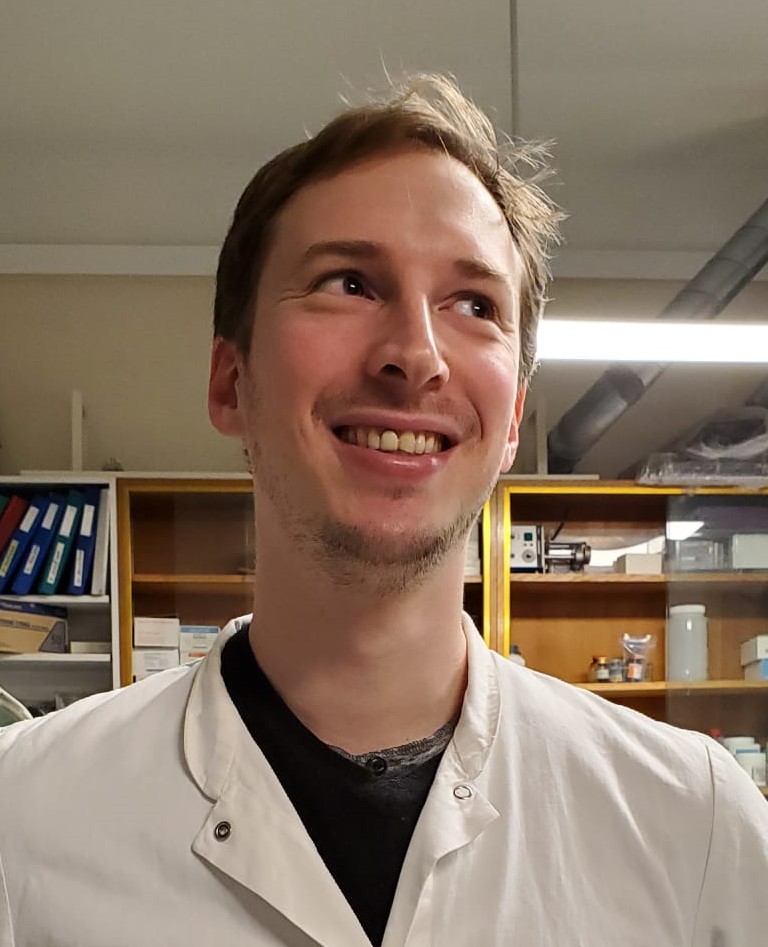IBPC, CNRS UMR8261 "Identification and characterization of RNA binding sites for (p)ppGpp using RNA-DRaCALA."
Nucleic Acids Research/, 10.1093/nar/gkac1224
Jagodnik,J., Tjaden,B., Ross,W. and Gourse,R.L.
Cv
Jonathan Jagodnik is a 33-year-old RNA-focused microbiologist. He accomplished his PhD in the Maude Guillier and Eliane Hajnsdorf team at the “Institut de Biologie Physico-Chimique” (IBPC), CNRS laboratory of Microbial Gene Expression, from 2013 until 2017. There, he studied small regulatory RNAs and discovered translation initiation activating stem-loops within bacterial messenger RNA coding sequences. He then moved to the USA, University of Wisconsin-Madison department of bacteriology, where he pursued a post-doctorate in the team of Richard L. Gourse from 2018 until 2021. Supported by an EMBO long-term fellowship, he developed the RNA-DRaCALA method to screen multiple RNA aptamers for ligand binding. Using this method, he confirmed the binding of multiple aptamers to the ppGpp and pppGpp alarmones and discovered some ppGpp- or pppGpp-specific aptamers. In September 2021, he has returned to the Guillier-Hajnsdorf team at IBPC, CNRS, where he is now developing his project on the transcriptome-wide study of bacterial translation initiation.
Contact
IBPC, CNRS UMR8261, 13 rue Pierre et Marie Curie, 75005 Paris
This email address is being protected from spambots. You need JavaScript enabled to view it.
@JagodnikScience
Summary of the article:
ppGpp and pppGpp [abbreviated here as (p)ppGpp] are highly conserved stress signaling molecules in bacteria, chloroplasts, and mitochondria.
When induced in response to stress, (p)ppGpp bind to multiple protein targets involved in functions as diverse as transcription, translation,
nucleotide metabolism, and other metabolic processes. (p)ppGpp can bind not only to proteins, but also to RNA aptamers : indeed, a
(p)ppGpp-binding family of aptamers recently was described in
firmicutes.These ligand-binding RNAs are embedded within RNA transcripts upstream of expression platforms forming riboswitches that regulate gene expression. Here, we implemented the DRaCALA technique, originally designed to study protein-ligand interactions, for the study of RNA-ligand binding, permitting rapid screening of dozens of RNA aptamer candidates concurrently. Using this method, which we call RNA-DRaCALA, we screened 30 RNA aptamer candidates for binding to (p)ppGpp and identified candidates with high specificity for ppGpp or pppGpp or both.
By expanding the number of biochemically verified sites, this method not only allowed construction of more accurate secondary structure models, but it also enabled prediction of key features that distinguish a ppGpp from a pppGpp binding site. We suggest this method could facilitate identification and understanding of the features needed for ligand binding to other classes of aptamers.




